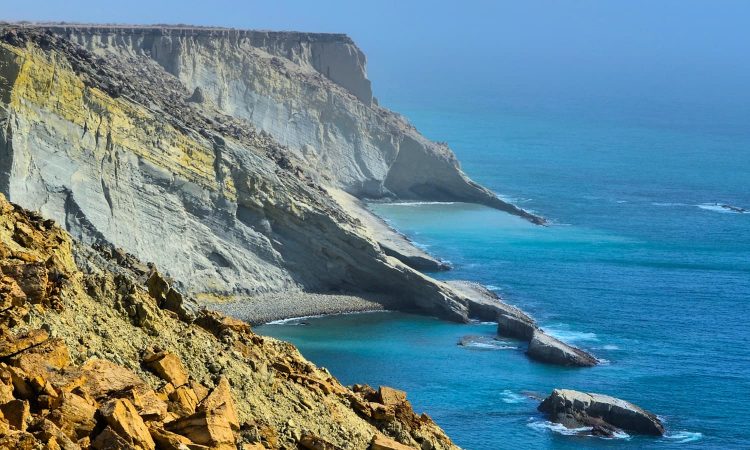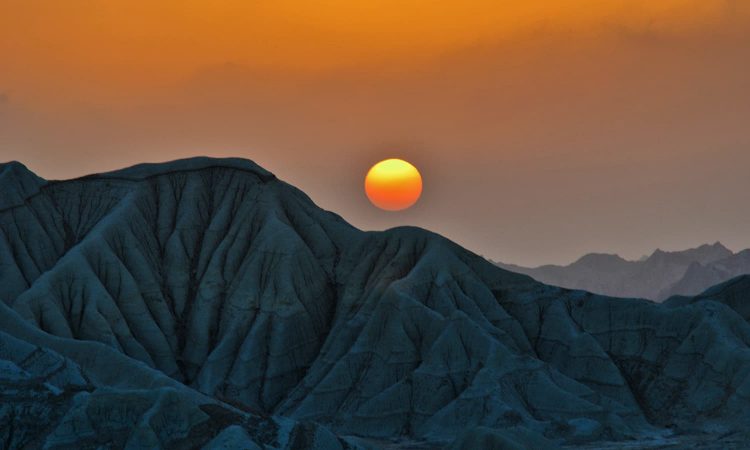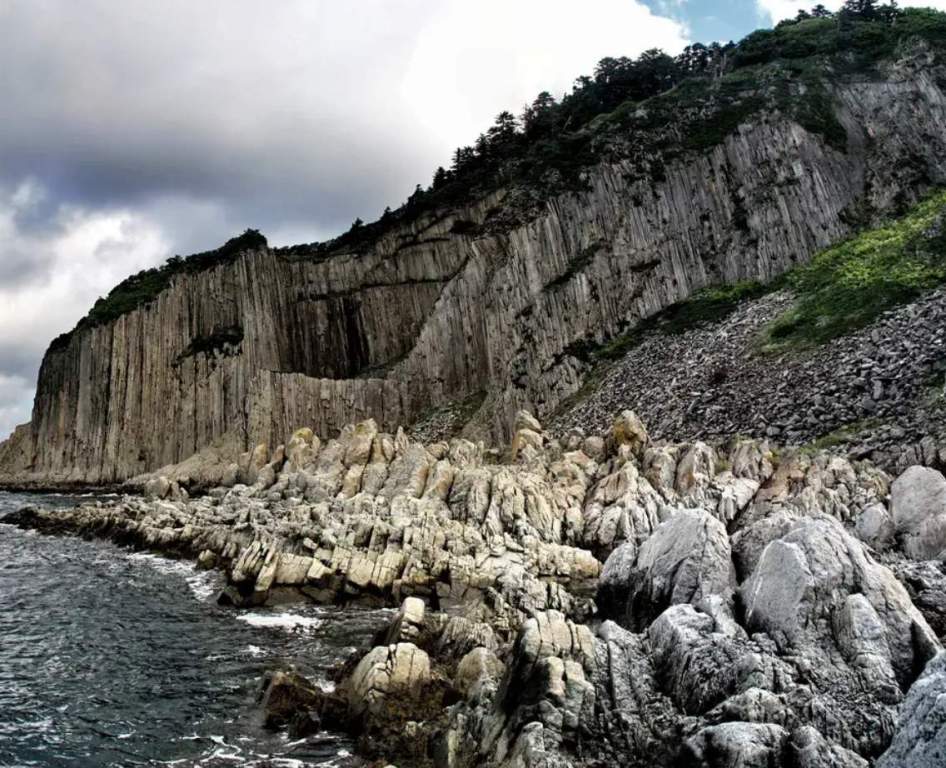In the Arabian Sea, approximately 25 km off the coast of Balochistan, lies a large, hidden, uninhabited island that is just 7 km long and 2.5 km wide. That island is famous as Astola Island (the Island of the Seven Hills), with its sheer white cliffs surrounded by warm turquoise water. A beautiful, slender white beach runs around the periphery of Astola Island. The cliffs shrink inland to make secluded caves, almost like in the Mediterranean.

It is also known as Jezira Haft Talar, which has long been Pakistan’s hidden gem. Astola Island is a mostly untouched site that has all the hallmarks of a tourist getaway. Thanks to its remote location, the superb beauty has remained unblemished. In 325 BC, Alexander the Great sent Arrian people to explore the Arabian Sea and Gulf Sea. However, the Sailors Fleet was frightened by the weird tales about a barren island. The Arrians called it Nosala and also named it Carmina or Karmine.

If someone wants to go to Astola Island, then he has to travel 7 hours from Karachi to Pasni, almost 40 kilometers from Astola Island. Pasni is a seaport in the Arabian Sea; from here, the ultimate destination is 5 hours by boat. Astola the largest offshore island in Pakistan, has no facilities, only an old lighthouse and a small Masjid.
Travelers who visit the secret place of Pakistan usually camp at the beach, go snorkeling or deep-sea diving and enjoy the chasms and crevices that are several feet wide. There are several natural caves and coves on Astola Island. The south side slopes off progressively, whereas the north face is cliff-like with a sharp vertical drop.

Fishermen caught lobsters, crabs, and oysters between May and September. The best time to visit Astola Island is in May and September, when a gentle breeze blows throughout the day and the color of the water and pattern of the beach keep changing with the tide. The water is so clear that one can see the seabed to a depth of about 20 feet. From mid-June to mid-August, the moon soon starts, which makes the island inaccessible by boat as the sea becomes too rough.

This is mostly a barren island due to the unavailability of fresh water; hence, you will not see too many trees there except a few bushes and scrubs. There is no vegetation on the Island. Nevertheless, there is plenty of marine life, such as corals, dolphins, whales, and diverse fish species. The majestic sandy beaches offer nesting grounds for different bird species such as gulls, godwits, curlews, coursers, plovers, sanderlings, endangered green sea turtles, and the hawksbill turtle (Eretmochelys imbracata). Therefore, the saw-scaled viper (Echis carinatus astolae) is endemic to Astola Island.

Unfortunately, legal and illegal fishing activities have done big damage to the island’s ecology. The fishermen dump waste and wrecked nets on the coast that get tangled in the corals and damage them. The sooty gull (Larus hemprichii), which once had a main breeding colony on the Astola island, has been getting rid of rats for a decade. However, the wild cats left the island to dig out turtle nests and eat the eggs and hatchlings. Furthermore, some ancient ruins of Hindu temples are located on the island, known to the Hindus as Satadip.

In 2017, Pakistan declared Astola Island’s first-ever Marine Protected Area. However, this Asian country has yet to draw up a proper plan on how to handle pollution problems. Therefore, this declaration has some positive aspects, but the ignorance of management raises questions about the protection of the island and the associated biodiversity, which is facing multiple issues. In 1982, the Pakistani government installed a lighthouse on the island for the safety of passing vessels; eventually, it was replaced by a solar-powered lighthouse in 1987.

The WWF for Nature in Pakistan argued that the development of a management plan for Astola Island would take time. Pakistan needs to take some time to consider the socio-economic aspects of local fishermen and issues related to livelihood needs. Astola Island needs good practices to be promoted and bad practices should be discouraged. They believe that it is possible to protect the island’s ecology and biodiversity and, at the same time, promote ecotourism on the island.








